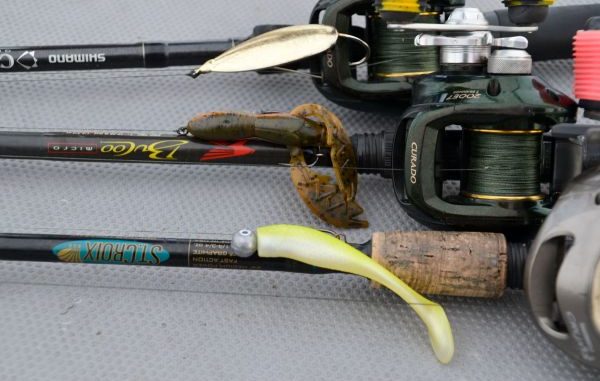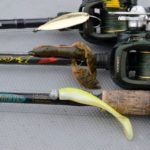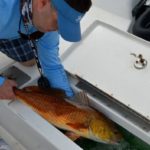
Stevie Nick has a simplistic approach to sight-fishing.
“You don’t need a hundred different lures for this,” he said. “There’s baits to catch fish, and there’s baits to catch fishermen. The three baits I use catch fish.”
His No. 1 bait is a NetBait Baby Paca Craw in Alabama craw color, rigged on a ¼-ounce Rockport Rattler jighead. He fishes the lure with a slow to moderate steady retrieve around and over vegetation.
When the water is deep or when fishing in heavy grass, he chunks a ½-ounce Johnson Sprite gold weedless spoon.
When using the latter lure, Nick slams the hook home as soon as the fish grabs it to prevent the fish from swallowing it.
“Deep-hooking can kill a redfish,” he explained, “which is fine for the ice chest, but dead fish can’t be entered in a tournament.”
The third lure he uses is a soft-plastic Matrix Shad on a ¼-ounce Goldeneye jighead. These are best where not much grass is present, and is fished with a jigging motion. The best time of the year to use the jig is March through May, before water grass growths becomes dense.
He presents his lures with 6 ½- to 7-foot medium-heavy extra-fast-action Falcon Bucoo rods. He favors Shimano Curado reels spooled with 40-pound-test PowerPro braided line tied dirctely to the lures.
“I’ve never had a problem doing that,” he said.
Tournament sightfishermen need other stuff, too. Nick insisted that the boat be equipped with twin shallow-water anchors.
“If you have only one (anchor), the boat will swing,” he said. His choice is Power-Pole brand.He also always keeps a 15-pound Boga Grip handy.
“It doesn’t produce puncture holes, and is accurate to a fourth of a pound.”
Once the fish is boated, the fisherman needs an angled, hands-free measuring board with a tail pincher to evaluate the size of the fish immediately with the least stress on the fish. Fish are measured with their mouths closed and their tail tips pinched toward each other by the bracket-like tail pincher.
Using the exact equipment (made by Delaney Fabrications in Semmes, Alabama) as used at tournament weigh-ins eliminates a lot of controversy, Nick said.
Finally, a tournament angler needs a good livewell that is properly managed. Dead fish cannot be weighed in.
“You got to have a recirculating pump,” Nick said. “Pump the well full of good water, shut off outside access and recirculate the water in the well. Add ice to keep the temperature in the well at about 70 degrees Fahrenheit.
“An insulated system will hold its temperature all day.”
Nick carries a simple aquarium thermometer to monitor livewell water temperature.
As a final tip, Nick encouraged the use of Rejuvenade Livewell Formula made by Outdoor Specialty Products. The manufacturer recommends using a capful for each 20 gallons of water in the livewell.
“One dose will last for 25 hours,” he noted.
“Oh, don’t forget: Bring a push pole,” Nick grinned. “You never know when you might get stuck fishing in shallow water.”


